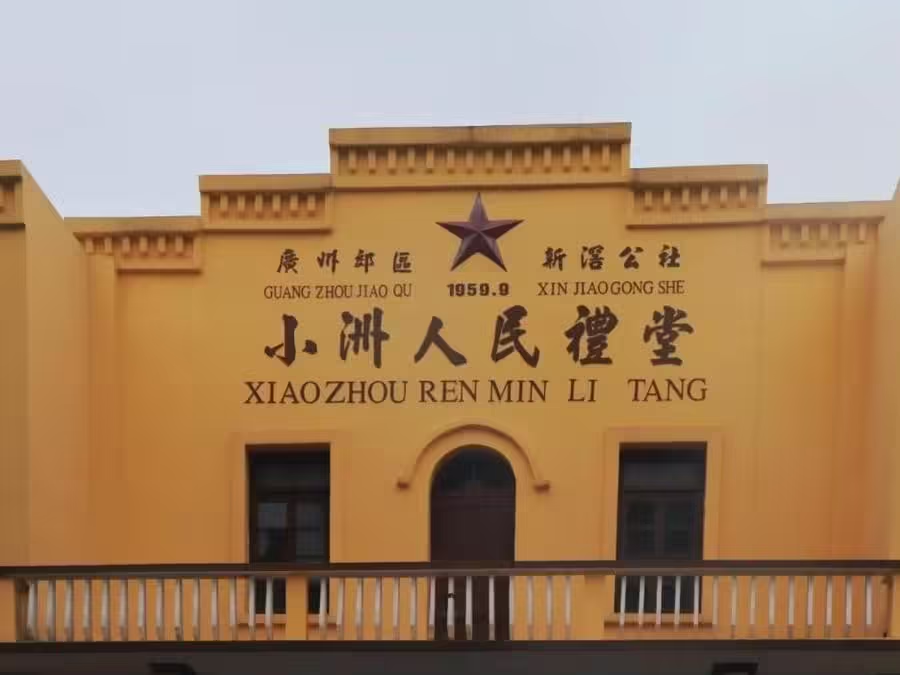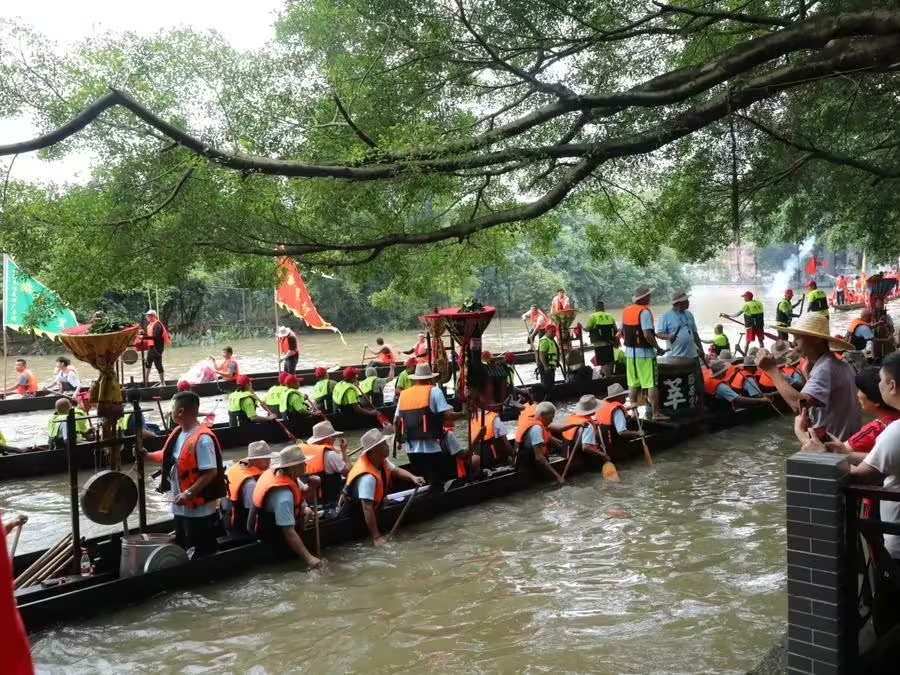Xiaozhou Village (小洲村), historically known as “Yingzhou (瀛洲),” is a traditional Chinese village located in the southeastern part of Haizhu District, Guangzhou, surrounded by water and resembling an island. Established during the Yuan Dynasty, the village became home to the Jian family, who migrated from Xinxiang, Henan Province, in the early Ming Dynasty, and have resided here ever since.
Xiaozhou Village has preserved its unique water-town layout and is often compared to Zhouzhuang in the north, earning the nickname “Yingzhou of the South.” The village boasts numerous immovable cultural relics, such as the Tianhou Palace, Yuxu Palace, ancient bridges, Dengying Ancient Wharf, and oyster-shell houses – structures that reflect the village’s historical use of local water resources from the Pearl River estuary.
Xiaozhou Village is not only a traditional Lingnan water-town but also a haven for artists, earning it the title of “Xiaozhou Art Village.” Many creative individuals have settled here, leading to its comparison with the famous 798 Art District in Beijing, giving rise to the saying, “Xiaozhou in the South, 798 in the North.”
Table of Contents
- Basic Information
- Location and Transportation
- Highlights of Xiaozhou Village
- Festivals and Activities
- Vlog about Xiaozhou Village
Basic Information
| Estimated Length of Tour | 1 hour |
| Ticket Price | Free |
| Opening Hours | 24 hours a day throughout the year |
Location and Transportation
Xiaozhou Village is located in Haizhu District, Guangzhou, Guangdong Province, directly opposite Yingzhou Ecological Park. Situated in the Pearl River Delta, the village is bordered by the Xijiang River on its northern and western sides. To get there, you can take bus 45, 252, 361, or 468 and get off at Xiaozhou Stop (小洲站)
Highlights of Xiaozhou Village
Hanmo Bridge

Hanmo Bridge is located on Shigang Stream, connecting Xipu Street and Xiyuan Street in Xiaozhou Village along Yingzhou Road. Legend has it that the bridge was built by a Xiaozhou native named Sima in memory of his ancestors. Originally constructed during the Ming Dynasty, the bridge runs in an east-west direction and is a single-arched stone beam bridge measuring 9.75 meters in length and 2.15 meters in width. The bridge bases are constructed with alternating layers of granite and red sandstone. Six granite steps lead to the bridge’s surface, which consists of five large stone beams. The bridge features stone railings with the name “Hanmo Bridge” inscribed in seal script on its central stone panel, though the inscription is now barely legible. Hanmo Bridge is one of the few well-preserved ancient stone bridges from the Ming Dynasty in Haizhu District and remains a vital pathway for villagers.
Dengying Ancient Village Wall

The Dengying Ancient Village Wall is located between 1 Dengying Outer Street and 11 Dengying New Street Alley in Xiaozhou Village. Built during the Xianfeng era of the Qing Dynasty, the wall runs 22 meters from east to west, stands 3.08 meters high, and is 0.27 meters thick. Constructed from blue bricks, the wall features rectangular window openings and a gate that was originally 3.54 meters wide. Though the gate has since been destroyed, the granite and brick foundation remain. The wall was once adorned with Cultural Revolution-era murals, though these are no longer discernible. The wall served as a defense structure and reflects the village’s prosperous commercial activity during its heyday. It is now the only remaining protective village wall in Haizhu District, preserving the architectural style and cultural history of Xiaozhou Village.
Xiaozhou People’s Auditorium

Xiaozhou People’s Auditorium, located at 20 Gongbei Street, Xiaozhou Village, Huazhou Subdistrict in Haizhu District, Guangzhou, was built in 1959 during the Great Leap Forward period. The entire village contributed to its construction, symbolizing the community’s collective effort. The auditorium is one of the few Soviet-style buildings in Haizhu District and stands as a testament to the industrial development history of Xiaozhou Village.
Festivals and Activities
Dragon Boat Festival

Welcoming a new dragon boat is a major event in Xiaozhou Village. The timing for this event is carefully chosen based on the hydrological tides, with the best period being during the rising waters of the Pearl River in the fourth or fifth month of the lunar calendar. Before the new boat enters the water, a traditional ceremony must take place. The dragon head is first covered with a red cloth, and firecrackers are set off to symbolize good fortune. Following the sound of drums and gongs, the dragon boat is launched into the water until it fully floats. Colorful parasols inscribed with auspicious phrases such as “Smooth Sailing,” “Vigorous Spirit,” “National Prosperity and Peace,” “Bountiful Harvests,” and “Favorable Weather” are then placed on the boat. The new dragon boat is also fitted with four gongs, a drum, and a decorative object called “Men Gong,” used for prayers to deities. Flags bearing the inscription “Flying Dragon of Yingzhou” are attached to the dragon’s head and tail. Before departing from its place of origin, the boat ceremoniously travels back and forth three times, symbolizing its farewell to its birthplace.
Beidi Temple Fair

The Beidi Temple Fair is a traditional cultural and entertainment event in Xiaozhou Village. Held annually on the third day of the third lunar month, it celebrates the birthday of Beidi, the Northern Emperor. On this day, people from surrounding villages come to pay their respects to Beidi, praying for family peace, good fortune, and happiness. The fair also includes the traditional “Piaose” parade, which starts on the first day of the third lunar month and continues for five days, concluding on the fifth day. During this time, a theatrical stage is set up on the pond north of Beidi Temple, and performances are held. The “Piaose” parade, also known as “Chuse,” follows the traditional route of Beidi’s procession, showcasing vibrant cultural festivities.


